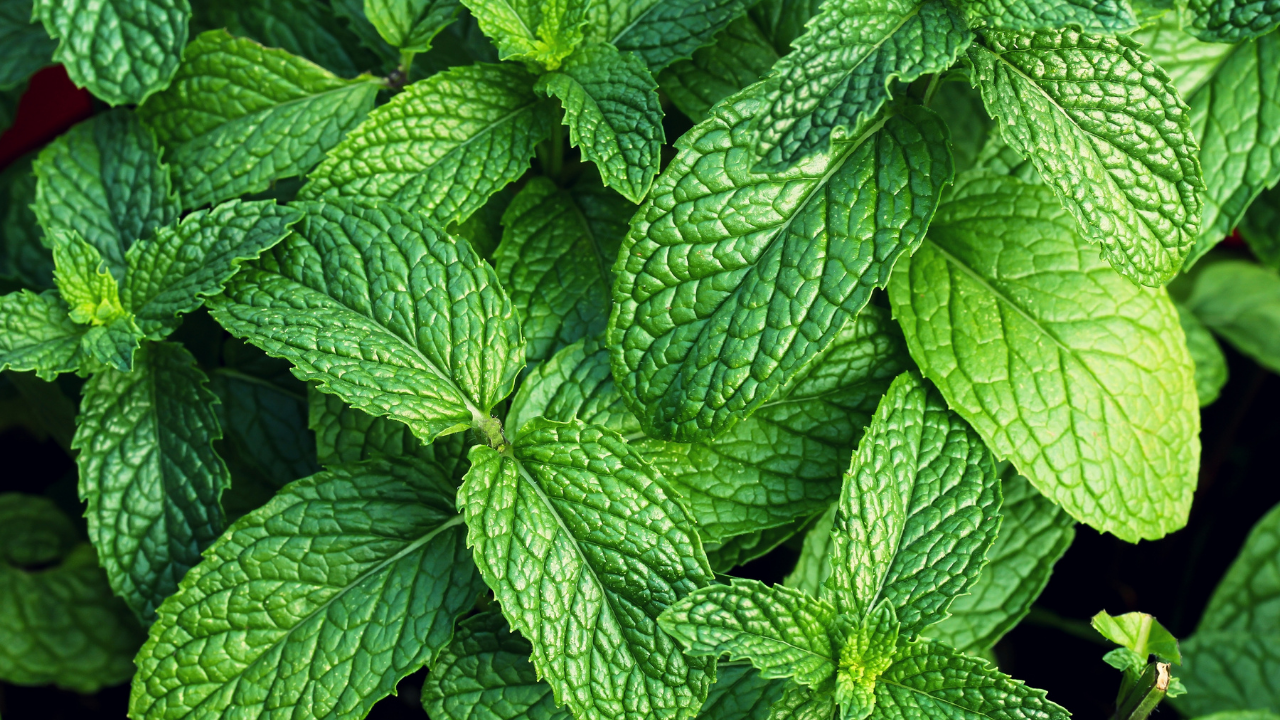
Interested in learning how to grow mint? You’ve come to the right place.
There are countless varieties of mintthat you can grow, all of which belong to the Mentha family. A natural ground cover, mint grows quickly and can easily become a nuisance plant if you aren’t careful about where you plant!
That said, this lovely plant can be grown for both culinary and ornamental purposes. It is attractive with its lovely pink or white flowers and can be used to attract birds, butterflies, and bees.
Read to learn how to plant, grow, and harvest your own mint? Here are some tips to help you get started.
Best Varieties of Mint
When it comes to the varieties of mint you should grow in your garden, rest assured - you will have plenty of options! This plant grows best in zones 3-11, depending on the species and varieties of mint that you choose to grow.
Some good options to consider growing include Mentha piperita(peppermint), Mentha spicata(spearmint), Mentha piperita citrata (orange mint), Mentha suaveolens(apple mint) and Mentha suaveolens variegata(pineapple mint).
Planting Mint
When you’re ready to start planting mint, keep in mind that this plant needs very little besides rich soil and lots of moisture. A tough to kill plant, it just requires a bit of occasional maintenance and pruning.
Planting mint in the right spot will go a long way in helping you care for this plant in the future. Choose a location where your mint will have plenty of room to sprawl.
Sow seeds outdoors in the late spring or start them indoors about nine weeks before the last frost. Keep the soil moist until the seed germinates. It should germinate in about ten to 15 days.
Grow mint in partial shade, although you can grow it in full sun as long as you take care to water it frequently. It is one of the few herbs, in fact, that grows well in shady areas.
The soil should be rich and slightly acidic, ideally with a pH between 6.5 and 7.0. If your soil is poor, you can fertilize it with a bit of organic matter, either before planting or as a topdressing around mature plants. The best time to fertilize later on is about halfway through the season after you’ve cut your plants once or twice already.
If you are growing mint in containers (a great idea to help control its spread!) just make sure the mint in your containers does not flop over and reach the ground. This can cause it to rot. Caring for mint will be similar in containers as it is to plants grown in the ground, but you may find that you may need to water and fertilize more often.
In addition, you will also need to cut sprigs of mint to plant in fresh containers if you find that your mint plants in containers become root bound. A cutting of mint will easily root itself in fresh water or soil and you can divide and transplant mature plants for new babies to grow, too.
Caring for Mint Plants
Mint likes to be grown in soil that is adequately moist with lots of drainage. They like water, but don’t want to be kept in overly soggy conditions.
If your soil feels dry to the touch, add water. The best time to water is first thing in the morning so that your plants get lots of water before the afternoon sun hits and begins to dry out your plants.
These plants can really handle the heat! They can be grown in areas as warm as zone 11 as long as you provide them with a bit of shade. That said, most mint plants can also handle the cold provided that you provide adequate winter protection. A thick layer of organic mulch, like straw or hay, will do the trick in most cases.
When it comes to the heat, you may find that it makes sense to mist your plants every now and then to increase humidity. This can also be beneficial if you are growing mint indoors during the drier winter months.
Fertilizer is generally not necessary but you may find that it’s beneficial to fertilize your mint plants throughout the growing season if you are growing mint in containers indoors. That’s because nutrients tend to leach out faster if you are growing plants in pots that need frequent watering.
You can just use an all-purpose liquid fertilizer every four to six weeks (as well as once in the early spring as soon as new growth emerges).
Common Pests and Diseases

When you are first learning how to grow mint, you may be wondering what sorts of diseases and pests you need to be on the lookout for.
The good news is that there are few issues to which mint is prone. Its highly aromatic, fragrant nature tends to repel the vast majority of pests and prevent a lot of problems with disease.
You may want to keep an eye out for rust, a disease that typically manifests as small orange spots on the bottom of leaves. You can use a natural fungicide to get rid of it. Letting your plants dry out between watering's and following proper spacing (something that can, admittedly, be difficult to do when you realize how easily mint spreads!) can prevent most fungal problems as well.
Otherwise, just keep an eye out for pests like mealybugs, aphids, whiteflies, and spider mites. These are uncommon unless your plants are stressed, so following the other tips for learning how to grow mint should help you keep these issues away.
Harvesting Mint

Most varieties of mint mature quickly and are ready for harvest in just two months. Once established, your mint plants will be perennial, producing edible leaves for you for years to come.
You can begin harvesting mintleaves as soon as the plant has multiple stems that are at least six or seven inches long. Never harvest more than a third of the plant at a time so that you don’t accidentally waken the plant.
Otherwise, you can just snipe pigs as needed!
Growing Mint: An Enjoyable Pastime!
Mint is a tasty herb that can be used in many different ways. It's also really easy to grow!
There are plenty of uses for this plant. Mint is a perennial plant that grows well in the cool, moist soil of a garden.
Mint is most often grown for its leaves, which are used to flavor many foods and drinks. It can also be used as an herb or ground into powder form to make herbal teas. Growing your own mint plants will give you access to fresh leaves all year round so get started today!



